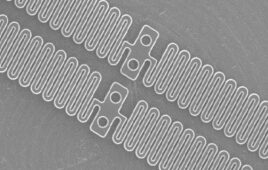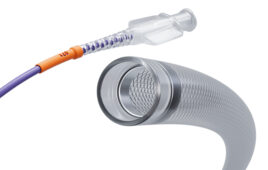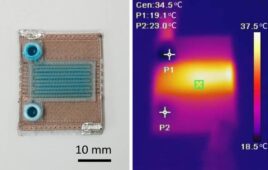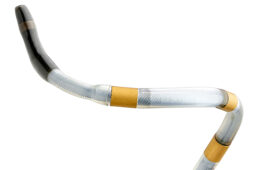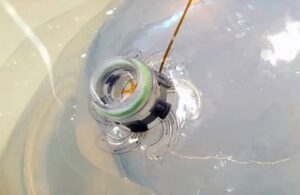
[Image from of NewScientist/Sukho Song]
Researchers say a soft robot inserted through a tiny hole in the skull could offer effective brain monitoring and treatment.
The researchers aim to provide a less invasive approach for placing electrodes on the brain’s surface compared to traditional methods. In those traditional methods, surgeons cut a hole in the skull the size of the fully extended device. The soft robot the team developed requires only a small hole and can deploy six sensor-filled legs on the brain’s surface.
According to an article published by NewScientist, the researchers hope to prove the concept safe and effective, having successfully tested it in a miniature pig. If proven as such, it could eventually aid in monitoring and treating people experiencing epileptic seizures, among other neurological disorders.
Stéphanie Lacour of the Swiss Federal Institute of Technology in Lausanne said the team aims to utilize a “really large surface area” accessible without performing a large craniotomy.
About the soft robot for brain monitoring
The team designed the robot at a length of 2 cm with legs primarily made from flexible silicone polymer. According to the article, the legs resemble curved flower petals spiraling around the central body. When fully extended, they cover a 4 cm diameter and each leg contains electrodes for brain monitoring. The team says they could extend the legs to 8 cm or 10 cm in future prototypes, and without needing to increase the size of the hole in the skull.
When tucked in, the legs resemble a sleeve with the cuff pushed up as if turned inside-out. To unfurl, liquid fills into the legs and pushes them outwards.
The team tested their robot on a model of the brain made from plastic and hydrogel. Researchers also demonstrated the deployment of a single, straight robotic leg (15 mm long) on the brain of a Göttingen minipig. With the pig, the soft robot’s electrodes recorded brain activity patterns as the researchers electrically stimulated the minipig’s snout.
Lacour said the challenge with deployment comes because practically no gap exists between the human brain and skull. On average, that gap registers at just 1 mm. To address this, the researchers designed the robot’s legs to gently expand to avoid applying too much pressure on the brain.
The robot uses strain sensors embedded in each leg. They convey information about when the robot legs fully deploy, eliminating the need for additional cameras or external sensors. Once brain monitoring completes, the robot legs deflate for a surgeon to easily pull them out.
“Their innovative use of strain sensors … has the potential to reduce the need for post-operative imaging and shorten the time spent in the operating theatre,” says Damiano Barone at the University of Cambridge.
The researchers plan to scale up their robot for human testing through a spinoff called Neurosoft Bioelectronics.

